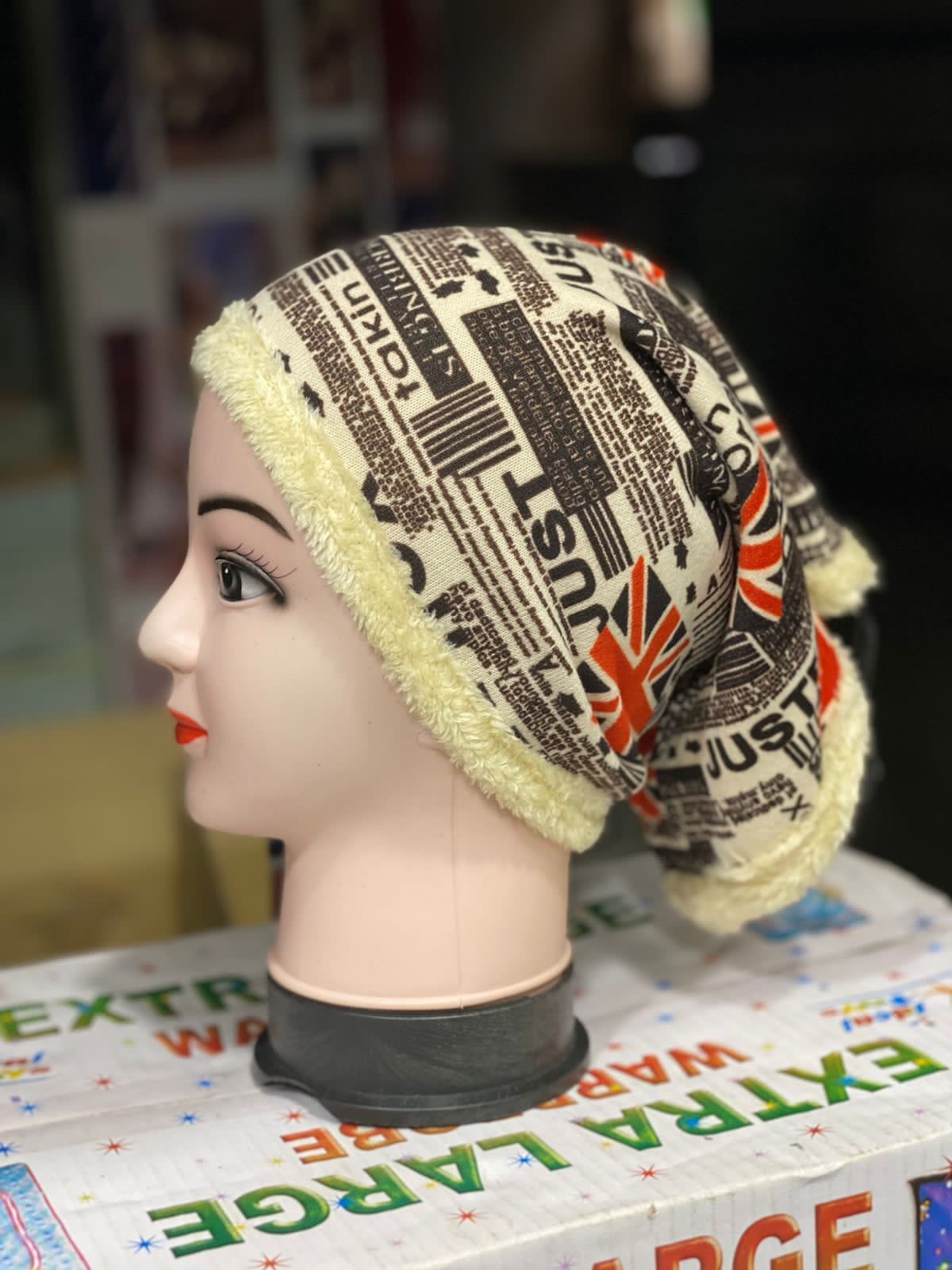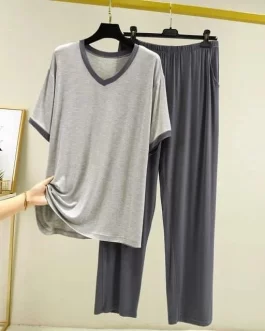LONG WINTER CAP
Original price was: ₨ 1,000.₨ 750Current price is: ₨ 750.
Description
The Science of Staying Cozy: How Long Winter Caps Keep You Warm
Introduction: The Importance of Staying Warm in Winter
As the temperature drops and the winter season sets in, it becomes crucial to prioritize staying warm. Cold weather can pose various dangers to our health, including hypothermia and frostbite. It is essential to protect ourselves from the cold to maintain our well-being and comfort. One of the most effective ways to stay warm during winter is by wearing appropriate clothing, including winter caps. Winter caps not only add a stylish touch to our outfits but also play a significant role in keeping us cozy.
The Science Behind Long Winter Cap: How They Keep You Warm
Winter caps work by trapping heat and insulating our heads, which helps to keep us warm in cold weather. The human body loses a significant amount of heat through the head, making it essential to cover it properly. Winter caps are designed to fit snugly on the head, preventing heat from escaping and cold air from entering. They act as a barrier between our heads and the cold environment, helping to maintain a comfortable temperature.
The materials used in winter caps also contribute to their ability to keep us warm. Fabrics such as wool, fleece, and acrylic are commonly used due to their insulating properties. These materials trap air close to the body, creating a layer of warmth. Additionally, some winter caps are lined with thermal materials that provide extra insulation. By understanding the science behind winter caps, we can make informed choices when selecting the right cap for our needs.
Materials Matter: Choosing the Right Fabric for Your Long Winter Cap
When choosing a winter cap, it is important to consider the type of fabric used. Different fabrics offer varying levels of warmth and comfort. Wool is a popular choice for winter caps due to its excellent insulation properties. It is a natural fiber that can retain heat even when wet, making it ideal for cold and damp conditions. Wool also has moisture-wicking properties, which helps to keep the head dry and comfortable.
Fleece is another commonly used fabric in winter caps. It is a synthetic material that is soft, lightweight, and highly insulating. Fleece traps air effectively, providing warmth without adding bulk. It is also quick-drying and breathable, making it suitable for various winter activities. Acrylic is a synthetic alternative to wool that offers similar insulation properties. It is lightweight, soft, and resistant to moisture, making it a practical choice for winter caps.
When choosing the right fabric for your winter cap, consider your personal preferences and the specific weather conditions you will be facing. Each fabric has its own advantages and disadvantages, so it is important to find the one that suits your needs best.
The Role of Insulation in Long Winter Cap: Understanding the Different Types
Insulation is a crucial component of winter caps as it helps to retain heat and keep us warm. There are different types of insulation used in winter caps, each with its own benefits. Down insulation is highly effective at trapping heat and is known for its exceptional warmth-to-weight ratio. It is made from the soft feathers of ducks or geese and provides excellent insulation even in extreme cold.
Synthetic insulation, such as Thinsulate or PrimaLoft, is another popular choice for winter caps. These materials are designed to mimic the properties of down while offering better moisture resistance. Synthetic insulation is also hypoallergenic and retains its insulating properties even when wet. It is a practical option for those who may be exposed to wet or damp conditions.
When choosing the right insulation for your winter cap, consider the climate you will be in and your personal preferences. Down insulation is ideal for extremely cold conditions, while synthetic insulation offers better moisture resistance. By understanding the different types of insulation, you can make an informed decision when selecting a winter cap.
The Fit Factor: How a Properly Fitted Cap Can Keep You Cozy
The fit of a winter cap plays a crucial role in its ability to keep you warm. A properly fitted cap should cover your entire head, including your ears, without being too tight or too loose. It should sit snugly on your head, creating a seal that prevents cold air from entering and warm air from escaping.
To ensure a proper fit, it is important to measure your head circumference accurately. Use a flexible measuring tape and wrap it around the widest part of your head, just above your eyebrows. Take note of the measurement and refer to the sizing chart provided by the manufacturer when selecting a winter cap. It is also helpful to try on different styles and brands to find the one that fits you best.
A properly fitted winter cap not only keeps you warm but also ensures comfort and functionality. It should stay in place during activities and not obstruct your vision or hearing. By paying attention to the fit of your winter cap, you can maximize its effectiveness in keeping you cozy.
The Benefits of Layering: Combining Winter Caps with Other Cold-Weather Gear
Layering is a key strategy for staying warm in cold weather, and winter caps can be an essential part of this approach. By layering your winter cap with other cold-weather gear, you can create multiple barriers against the cold and maintain optimal warmth.
Start with a base layer that is moisture-wicking and insulating, such as a thermal shirt or long underwear. This layer will help to regulate your body temperature and keep you dry. Add an insulating mid-layer, such as a fleece jacket or sweater, to provide additional warmth. Finally, top it off with a winter cap that covers your head and ears.
By layering your winter cap with other cold-weather gear, you create a system that traps heat and prevents cold air from reaching your body. This approach allows you to adjust your clothing as needed, depending on the temperature and activity level. It also provides versatility and flexibility in adapting to changing weather conditions.
The Impact of Weather Conditions on Winter Caps: How to Choose the Right Cap for the Climate
Different weather conditions require different types of winter caps. When choosing a winter cap, consider the climate and weather conditions you will be facing. If you live in an area with extremely cold temperatures, a cap with down insulation and a windproof outer layer may be necessary. This will provide maximum warmth and protection against the elements.
For milder climates, a cap with synthetic insulation and a breathable outer layer may be more suitable. This will provide insulation without causing overheating or excessive sweating. It is also important to consider the level of activity you will be engaging in. If you will be participating in high-intensity activities, such as skiing or snowboarding, a cap with moisture-wicking properties and ventilation may be beneficial.
By choosing the right cap for the climate and weather conditions, you can ensure optimal warmth and comfort. It is also helpful to have multiple caps with different insulation levels and features to accommodate varying conditions.
The Evolution of Winter Caps: From Traditional Designs to Modern Technology
Winter caps have come a long way in terms of design and functionality. Traditional designs, such as the beanie or the trapper hat, have been adapted and improved upon to meet the needs of modern individuals. Advances in technology have also played a significant role in enhancing the performance of winter caps.
Modern winter caps often incorporate features such as moisture-wicking properties, ventilation systems, and adjustable closures. These features help to regulate body temperature, prevent overheating, and provide a customized fit. Some winter caps also have built-in ear flaps or neck warmers for added protection against the cold.
In addition to functional improvements, winter caps have also become more stylish and versatile. They are available in a wide range of colors, patterns, and designs, allowing individuals to express their personal style while staying warm. Some winter caps are even designed to be compatible with headphones or other electronic devices, making them practical for those who enjoy listening to music or podcasts while outdoors.
The evolution of winter caps has made them more effective and enjoyable to wear. By embracing modern technology and design, individuals can stay cozy and fashionable during the winter season.
Caring for Your Winter Caps: Tips for Maintaining Warmth and Durability
To ensure that your winter caps continue to provide warmth and durability, it is important to care for them properly. Here are some tips for maintaining your winter caps:
1. Follow the care instructions provided by the manufacturer. Different fabrics and materials may require specific care methods, such as hand washing or machine washing on a gentle cycle.
2. Avoid using harsh detergents or bleach, as they can damage the fabric and reduce its insulating properties. Use a mild detergent specifically formulated for delicate fabrics.
3. Air dry your winter caps instead of using a dryer, as high heat can shrink or distort the shape of the cap. Lay them flat on a clean towel or hang them to dry.
4. Store your winter caps in a cool, dry place when not in use. Avoid folding or crushing them, as this can cause creases or deformities.
By following these care tips, you can prolong the lifespan of your winter caps and ensure that they continue to provide warmth and comfort.
Conclusion: Embracing the Science of Staying Cozy with Winter Caps
Staying warm in winter is not just a matter of comfort; it is essential for our health and well-being. Winter caps play a crucial role in keeping us cozy by trapping heat and insulating our heads. By understanding the science behind winter caps, we can make informed choices when selecting the right cap for our needs.
Choosing the right fabric and insulation, ensuring a proper fit, and layering with other cold-weather gear are all important factors to consider when it comes to staying warm. Additionally, understanding the impact of weather conditions and embracing the evolution of winter caps can further enhance our ability to stay cozy.
By caring for our winter caps properly, we can maintain their warmth and durability for years to come. Embracing the science of staying cozy with winter caps allows us to enjoy the winter season while protecting ourselves from the cold. So, don’t forget to grab your favorite winter cap before heading out into the chilly weather!












